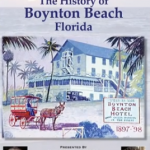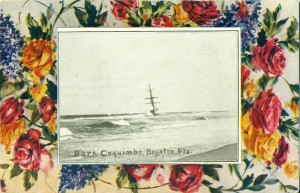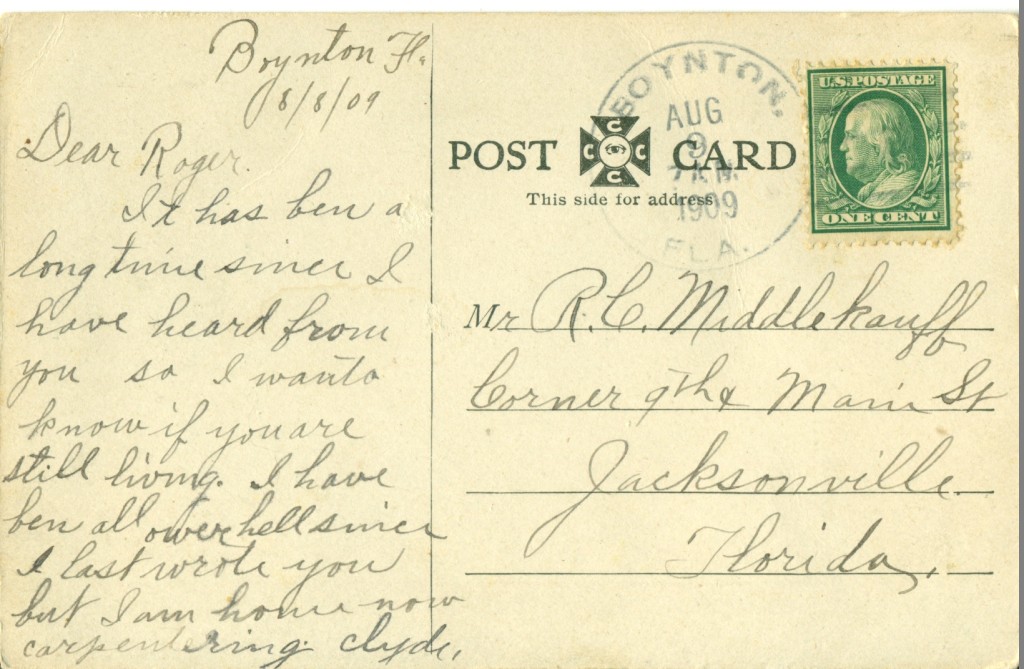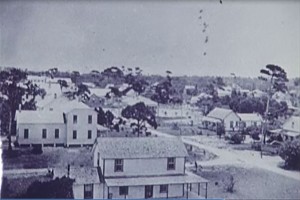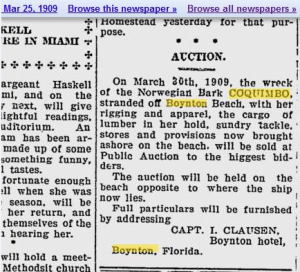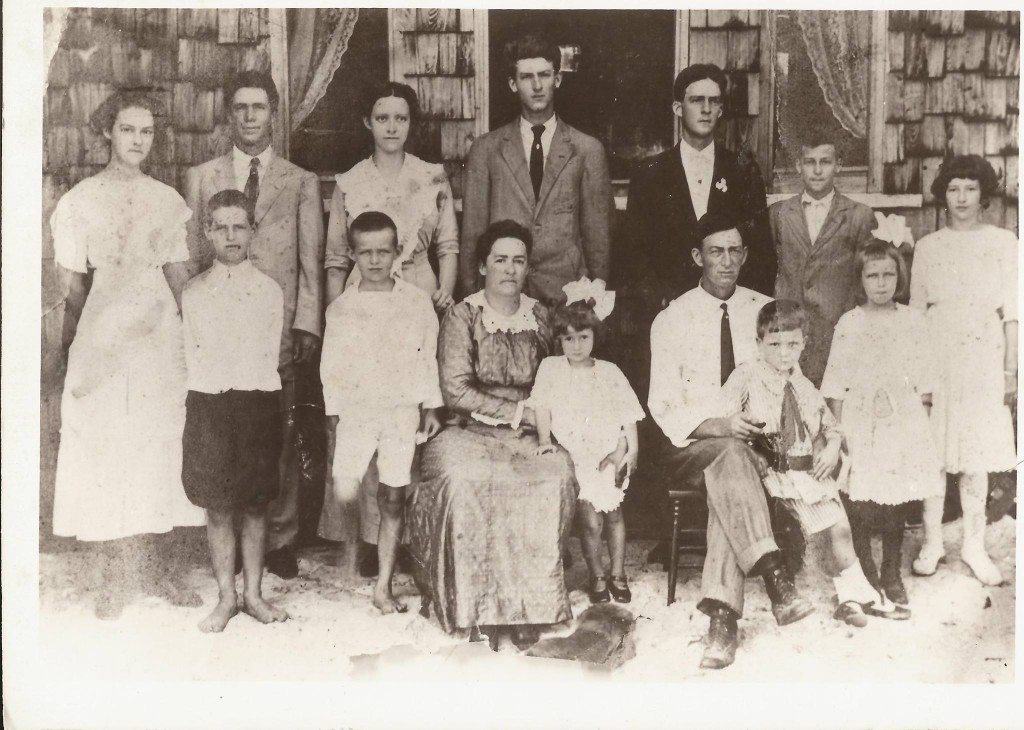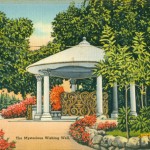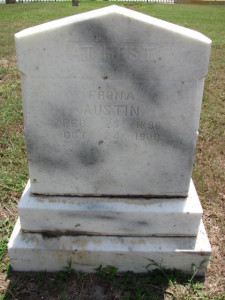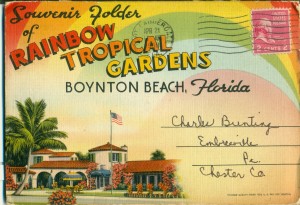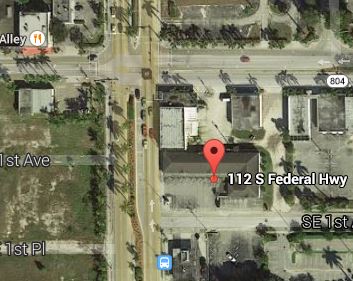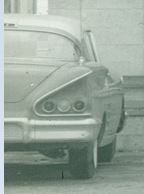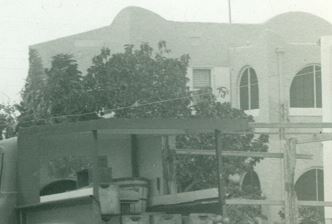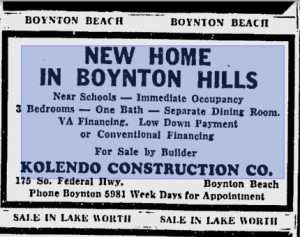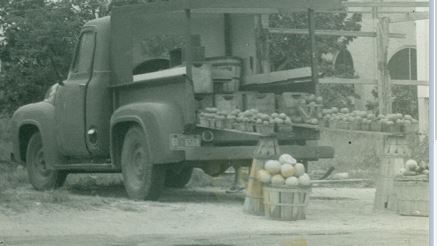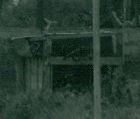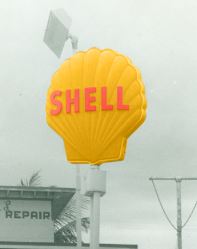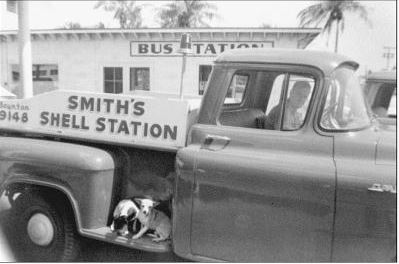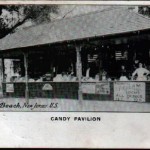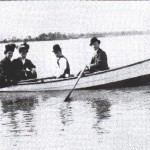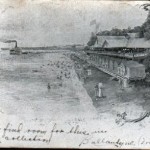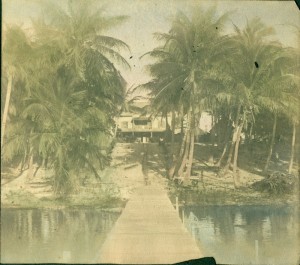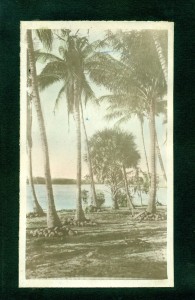[
Author Archives: Janet DeVries Naughton
Discovery of unusual postcard of the 1909 shipwreck Coquimbo and the tale of two Clydes
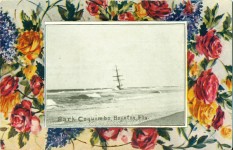
After years of searching for photographs of the 1909 shipwreck, The Coquimbo, on December 19th I spotted a postcard for sale on the Internet. As I read the title “Boynton FL Bark Shipwreck Coquimbo Floral Border c1910 Postcard,” my pulse quickened. When I opened the listing and viewed the photograph of the three-masted sailing ship, my heart skipped a beat. I scrolled down and stared at the reverse side. Postmarked August 9, 1909 and sporting a one-cent stamp, the message read
“Boynton Fl. 8/8/09 – Dear Roger. It has ben (sic) a long time since I have heard from you so I wanto (sic) know if you are still living. I have ben (sic) all over hell since I last wrote you but I am home now carpentering. clyde.”
I stared at the card and message for a few moments, then clicked ‘Buy-it-Now.’ I had to secure this image to add to the historic record of Palm Beach County and the city of Boynton Beach. I had an idea of who the sender was – there were only two young men named Clyde living in the Boynton area in 1910.
The Norwegian barkentine ship is legendary in Boynton Beach. During the pioneer era of the 1880s-1910s, many ships reportedly ran aground and sunk in the waters only several hundred yards off the Boynton coast. The Coquimbo is especially important to the history of Boynton as the 225-foot long ship carried a precious cargo of pine lumber and many of the early frame houses and buildings were constructed with the lumber.
After the barque ran aground on a reef January 31, 1909, the 15 crew members were rescued and reportedly camped on the beach using the ship’s sails as makeshift tents. The big sailing ship drew attention from the guests at the Boynton Hotel and was the talk of the town. After efforts to right the ship failed, Capt. I Clausen placed a notice for auction in the Miami Metropolis, auctioning off the cargo, rigging, supplies and most useful of all to the people of Boynton, the lumber.
The precious postcard held several clues. Initially, I suspected the card was sent by Clyde Murray, the oldest son of Horace B. and Mary Murray. The elder Murray, a carpenter and farmer, arrived in the tropical wilderness we now call Boynton Beach from Michigan in January, 1896 to build Maj. Nathan S. Boynton’s beachfront hotel. The fact that the sender came back “home,” and was “carpentering” sounded like a Murray following in his father’s steps.
This message also shed light on the massive building boom in Boynton, providing evidence to the stories about the many houses and buildings constructed of Coquimbo lumber springing up between 1909 and 1911. The sender evidently returned to Boynton to lend his carpentry skills to aid in the building boom.
My hunch proved wrong. After checking census records, I discovered Clyde Murray was born in 1893 rendering him merely 16 years of age in 1909.
Now to check out the other Clyde!
C.O. Miller is best known for creating Boynton’s most enduring and splendid roadside attraction, Rainbow Tropical Gardens. In addition, the master gardener designed the exquisite gardens of the famed Addison Mizner designed Cloister Inn.
Born Clyde O’Brien Miller in 1885, near Logansport, Indiana, Miller worked as a brakeman for the Pennsylvania Railroad before settling in Boynton in 1909.
A year later, at age 25, he married Leona Austin, one of Frank Austin’s three daughters.
The year before Clyde and Leona’s nuptials her sister Frona drowned in a tragic accident, while attempting to cross the canal on a waterlogged barge. A third sister, Nellie, married Capt. Walter “Pop” Lyman, son of Lantana founder, M.B. Lyman.
Frank Austin owned a farm and building supply store next to the Florida East Coast railway tracks on Lake Street (now Boynton Beach Blvd.)
The population of the Boynton settlement at that time numbered less than 700, and it is possible Miller met Miss Austin at her father’s store or at a Methodist Church activity. As a carpenter, Miller likely needed building supplies and tools from the store.
By following census records, news accounts and government documents, it seems Miller did indeed move about or travel often (as described in his 1909 postcard).
Clyde Miller and Leona Austin had four children, including Vivian Alice, Clyde Austin, and Merna. The firstborn, Averon Mae, born January 19, 1911 in Logansport, Indiana, died at about age six, probably from the influenza epidemic that claimed the lives of many, especially the very young, the elderly and the infirm. Averon’s tiny body has rested in Woodlawn Cemetery, West Palm Beach since her 1917 death.
A World War I Registration Card dated September 12, 1918, listed Miller’s occupation as a fisherman at Webster’s Fisheries in West Palm Beach. The record describes him as tall and stout, with light blue eyes and dark hair.
He served as a sheriff in Okeechobee briefly after the War.
By 1921, Clyde owned and operated Rainbow’s End Nursery on north U.S. 1. He specialized in tropical and semi-tropical plants. This nursery became Rainbow Tropical Gardens, one of the most famous attractions in Palm Beach County in the 1920s-1950s era.
More on Clyde Miller, Rainbow Tropical Gardens and its incarnations in an upcoming blog.
Frozen in Time
Last week an envelope of late 1950s/early 1960s photographs arrived in our mailbox. The lovely 8″ by 10″ photographs were taken by popular lens man Stan Sheets. While Mr. Sheets took photographs for the Boynton Star, the Palm Beach Post and other local newspapers, he also captured street scenes of mid twentieth century Boynton Beach. His foresight to photograph everyday street scenes and share his images with friends and neighbors (in this case friend Charles Cassell), allows us to look back and see the charm of our town a half century ago.
Most of the photographs are not labeled, but careful scrutiny of the foreground, background, and other details give clues to the place and the date of the images, now frozen in time.

Photograph of Boynton Greyhound Lines Bus Station by Stan Sheets. Donated by Faith Cyr. Colorized by Ginger Pedersen.
My favorite photograph is of the Greyhound Lines Bus Station. According to the 1959 Polk City Directory the bus station was located at 112 S. Federal Highway on the east side of Federal Highway about a block south of Ocean Avenue. What I find most amazing about this image is the details it captures.
Look closely, and you will see that not only did this structure serve as the bus terminal; it played an important role in communication and transportation, two vital components of our town’s infrastructure.
Note the two benches outside the station, for waiting for the bus. Imagine how many people rested there over the years, perhaps to leave for college in Tallahassee or visit relatives in the north. Picture the moms and dads tearfully waving white handkerchiefs as the buses pulled away. The station had a Western Union Telegraph Office, where you could send a telegram announcing you had arrived. “ARRIVED IN BOYNTON SAFELY STOP MISS YOU ALREADY STOP LOVE PATSY”
The telephone number for the local taxicab (9694) is displayed outside the station, and I spy a telephone booth in the far left of the frame, behind the 1958 Chevy Impala.
Try peering into the open door. Barely visible inside is an old Coca Cola machine. The 6 oz. bottles of Coke from the vending machine likely cost 10 cents by 1960. The empty bottles fetched a 2-cent return value. The bus station probably sold many of those 10-cent cokes in the summer, as the station had no air conditioning. The structure had jalousie windows and the door is open to let in a breath of air.
The house to the right of the frame once belonged to the Kolendo family. Joseph Kolendo, a building developer, was responsible for developing many of the single-family homes in Boynton in the 1950s.
The house has a huge television antenna. Those were the days before cable TV, satellite dishes, or WiFi. The television was likely a black and white console with only a few TV stations reached by dial, probably WTHS, channel 2,WJNO, channel 5, WEAT, channel 12, WIRK, channel 21.
What is curious about the photo is the roadside citrus stand. An old pickup truck with a makeshift stand is peddling grapefruit and oranges.
Behind the truck are several lean-to’s or storage sheds with an assortment of old junkyard type objects lying about.
I spy a child’s old rusted tricycle on top of the haphazard pile. I guess the city didn’t have code enforcement in those days.
(Update: Wayne Kolendo tells us the small building with the tricyle, bike wheels and other items housed his bicycle repair/building shop. Kolendo was a mechanical entrepreneur during his high school years.).
While no gas pumps are visible, one can’t miss the iconic yellow and red Shell Oil Company sign with the 1955 emblem. Using modern day magic, the original photograph by Stan Sheets is again glowing brightly.
Next time you come across some old pictures, send them to us. You might see some of them featured here!
*If any readers know Mr. Sheets, please let him know we are interested in talking to him, and thanking him for capturing and preserving our history.
(8/21/14 update) We learned Stan Sheets left us in 2005. We are working with his family to honor him for his community support and for chronicling Boynton history.
We also found another photo of the bus station/Shell Station.
Special thanks to:
- Faith Cyr
- Wendy Smith Franklin
- Debra Kolendo
- Ginger Pedersen
- Stan Sheets
- Historic Boynton Beach Facebook Fans
References for this story:
- Car Gurus. http://www.cargurus.com/Cars/1958-Chevrolet-Impala-Pictures-c4308
- Florida Television History. http://rogersimmons.com/florida-television-history/
- GoogleMaps. https://www.google.com/#q=112+S+Federal+Hwy%2C+Boynton+Beach%2C+FL
- Palm Beach Post
- Polk City Directory
- Shell Oil Company. http://www.shell.com/global/aboutshell/who-we-are/our-history/history-of-pecten.html
- History of Coca Cola. http://www.worldofcoca-cola.com/coca-cola-facts/coca-cola-history/
The “Other” Boynton Beach
In my days working as archivist for the Boynton Beach City Library, every once in a while I’d get a phone call from an enthusiastic caller who thought they discovered a rare image of Boynton Beach. I adore finding new (old) images of Boynton Beach, so you can imagine my excitement as I anticipated this revealing, deeper glimpse into the faded history of our fair city.
Envision my disappointment, and theirs, when I scrutinized the photograph and determined it was not Boynton Beach, Florida.
How did I know the images were not Boynton Beach? Well, the trees weren’t right (we had pines and palms). The big Ferris Wheel and merry-go-round, while resplendent for their time, weren’t representative of our Boynton Beach.
The other Boynton Beach, in this case, was a New Jersey waterfront resort established by another Boynton, Cassimer Whitman Boynton, a native of Maine. It was located in Woodbridge Township near Perth Amboy.
There are many similarities and even more differences in Boynton Beach, New Jersey and Boynton Beach, Florida.
Similarities between Boynton Beach, New Jersey (also known as Sewaren) and the Boynton Beach Hotel in Florida.
- Both places called Boynton Beach
- Both established as resorts for wealthy northerners
- Both on the waterfront
- Both offered postcards as souvenirs to guests
- Both had wooden hotels for guests to stay
- Visitors arrived to both resorts via train or boat
- Both had a bathing beach with a bathhouse
- Both had a shooting range
- Both offered fishing and boating excursions
- Both began in the late 1800s
- Both the resort in New Jersey and the Hotel Boynton in Florida closed by 1925
Differences between Boynton Beach, New Jersey (also known as Sewaren) and the Boynton Beach Hotel in Florida (established by Major Nathan Smith Boynton of Port Huron, Michigan).
- Started by different Boynton families (they were both descendants of Sir Matthew Boynton)
- The Boynton Beach in New Jersey attracted visitors in the summer months
- The Boynton Beach in Florida attracted visitors in the winter months
- The Boynton Beach in New Jersey offered amusement rides, a Nickelodeon, photographic booths and pony rides.
- The Boynton Beach in New Jersey had a hot dog stand and an ice cream stand
- The Boynton Beach in Florida offered dining in the Boynton Beach Hotel dining room. Meals were included for $2.00 a day in 1898.
- The Boynton Beach in New Jersey had a dance pavilion with live orchestra’s every Saturday in night in the summer.
- The Boynton Beach in New Jersey had a pier.
Both of the resorts closed by 1925. The New Jersey property was sold to the Shell Oil Company. The Florida Boynton property was managed by A.E. Parker, Major Boynton’s son-in-law until 1925. The area is now known as Ocean Ridge.
The faded picture postcards of both Boynton Beach resorts are the remnants of this idyllic time in history.
More information about Boynton Beach in New Jersey may be found at the following websites:
Hatala, Greg. The Star Ledger. (2013)
http://www.nj.com/middlesex/index.ssf/2013/07/glimpse_of_history_cabanas_at_boynton_beach.html
History of Sewaren. http://mhswebtvprinting.tripod.com/wrcsewarenhistory.html.
ThatNJVideoGuy. Historical Boynton Beach. https://www.youtube.com/watch?v=VpnS1jlVxG0.
http://www.nj.com/middlesex/index.ssf/2013/07/glimpse_of_history_cabanas_at_boynton_beach.html
Trueger, V. Sewaren’s History. (2011) Garden State Legacy. Issue 11. http://gardenstatelegacy.com/files/Sewarens_Heyday_Troeger_GSL11_PRINT.pdf.
History treasures in your house?
Do you have photo albums stored on the top shelf of your closet, buried deep in the attic or stowed some other place in your house? What about that file box of old school awards and birthday cards or the shoebox full of postcards?
The items are probably mementos from your childhood, and likely illustrate people and places lost to time. Perhaps you inherited these items from a relative and you don’t know much about the people and places in the photographs.
Please do not throw them away. Each scrap of paper, image, postcard, receipt and letterhead contains a link to the past. You never know how such information might reveal clues to our history or provide valuable information to researchers and future generations.
Case in point: I recently came across a 100-year-old photo album on the Internet. The album contained hundreds of images of coastal Palm Beach County prior to development. Following clues discovered in the old album, I researched and uncovered the locations of the images and learned about the earliest families to live in the area we call Manalapan; the tropical paradise just north of the Boynton Inlet.
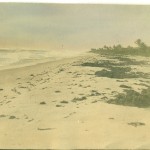
Image of our beach, circa 1912-1917, discovered in a discarded photo album full of coastal Palm Beach County photographs.
To learn more about my “paradise found” in the August issue of The Coastal Star newspaper- click here to read it.
Next time you think about those dusty old photo albums stashed somewhere in your house, consider adding to the historical record by chronicling your family history. If you can’t remember who the people are, or where the images were taken, the historical researchers at the Boynton Beach Historical Society (and our members) might be able to figure it out. We refer you to the appropriate local or national repository.
Remember, please don’t throw our history away!

